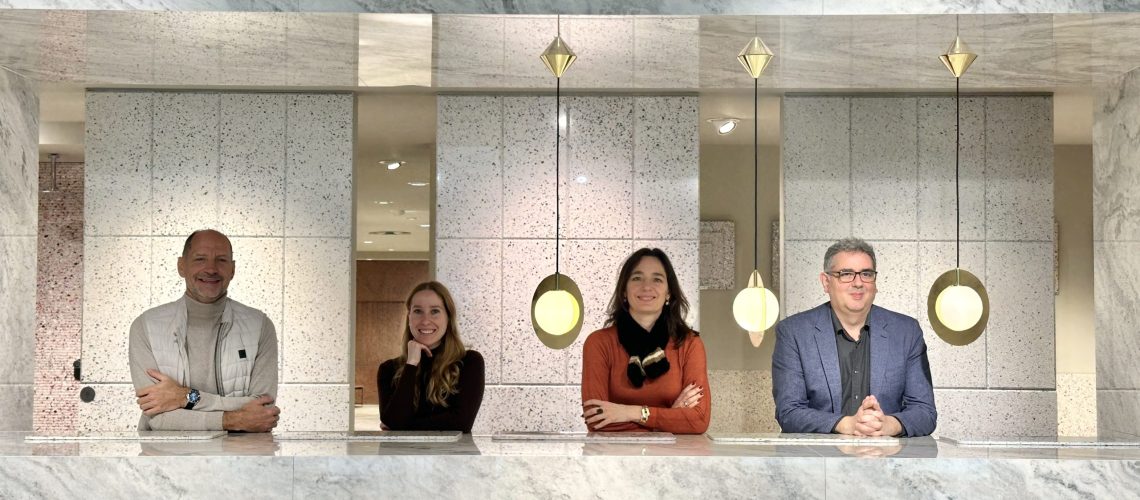Have you heard about the 4th dimension of tile production?
My colleagues and I visited the Valley of Tiles to see how manufacturing is becoming more environmentally conscious, as well as looking at the new collections.
In Reggio Emilia, a fourth dimension has emerged in tile production. The heating of factory kilns with hydrogen is a sustainable and environmentally friendly technology. The Iris Ceramica Group has pioneered this field by opening the world’s first green hydrogen ceramics factory in Castellarano. This project has created a unique industrial process that sets new standards in the ceramics industry and contributes to the decarbonisation of the sector. The factory produces green hydrogen from renewable energy sources such as solar power and uses rainwater for electrolysis, which breaks the water down into hydrogen and oxygen. The hydrogen is then used to heat the furnaces, and the water vapour from the combustion process is released back into the atmosphere, reducing CO₂ emissions.
In addition to incineration technology, dematerialisation is an important sustainability aspect.
Emilgroup produces large slabs of tiles using heat and drying. Slow firing de-stresses the tiles and allows the materials to be thinned. The Laminam factory, for example, can reduce the thickness of tiles to as little as 2 mm while maintaining their flexibility. The lightweight, large sheets reduce transport and handling costs. They are also ideal for renovation work, where they can be installed on existing surface layers without demolition.
The development of surface treatment technology also plays a major role in the aesthetic renewal of tile production. Touch, surface play, 800 dpi printing and full body technology are all tools that enhance the aesthetic experience of products. The stone-like materials that ripple to the touch bring the feel of real stone. 800 dpi printing allows the creation of highly detailed patterns on tiles. The full body technology means that the tiles have the same colour and pattern throughout the entire material, not just on the surface, so they retain their aesthetic qualities even when worn and their cross-section has a stone effect.
Together, these innovations contribute to a more sustainable and aesthetically high-quality product for the tile industry, while reducing the environmental impact.


